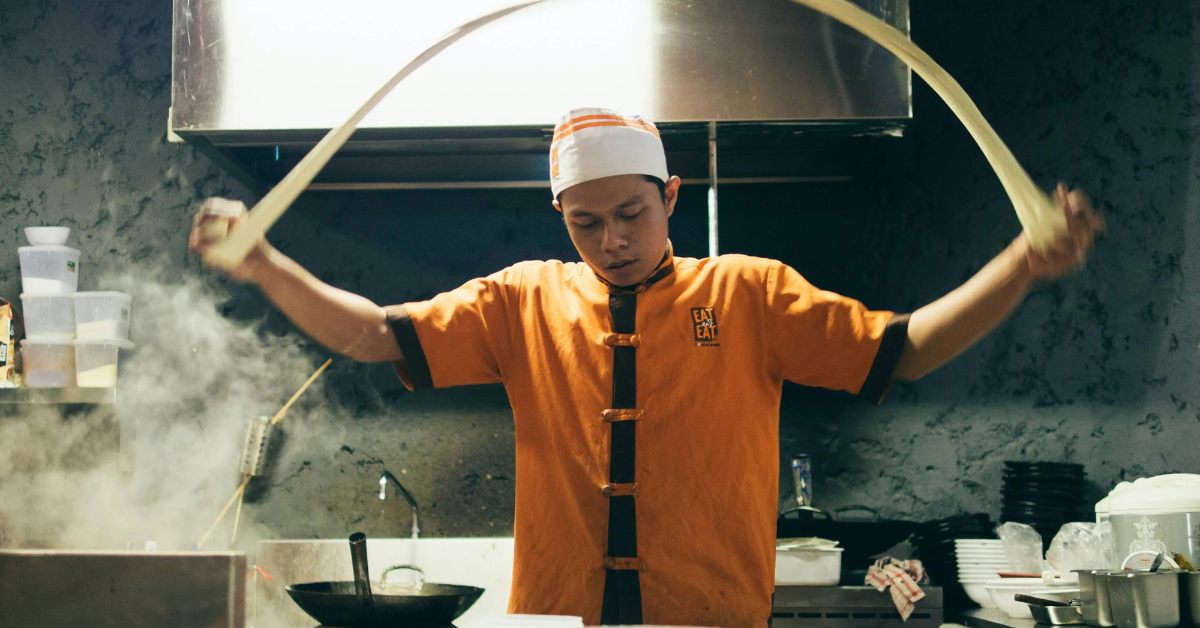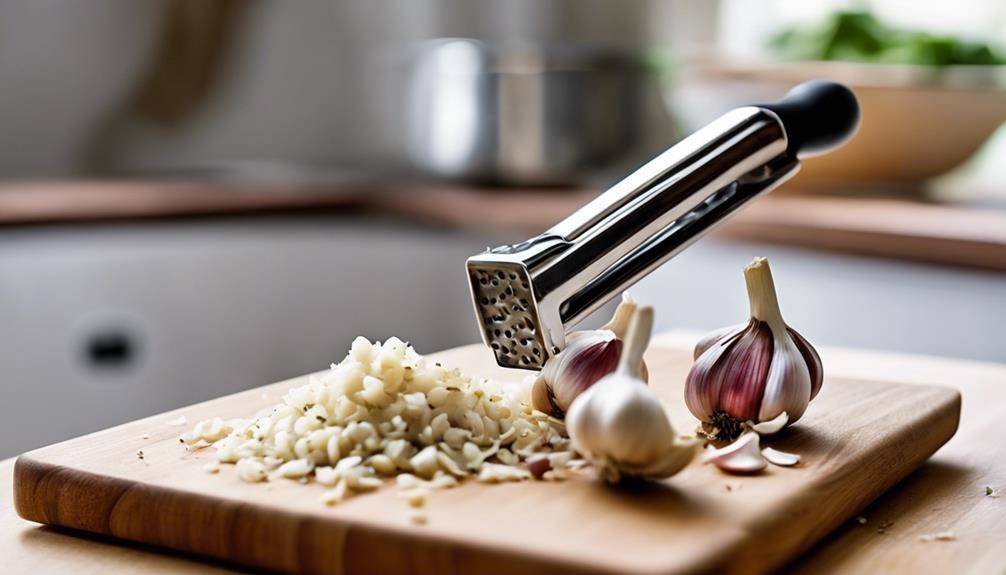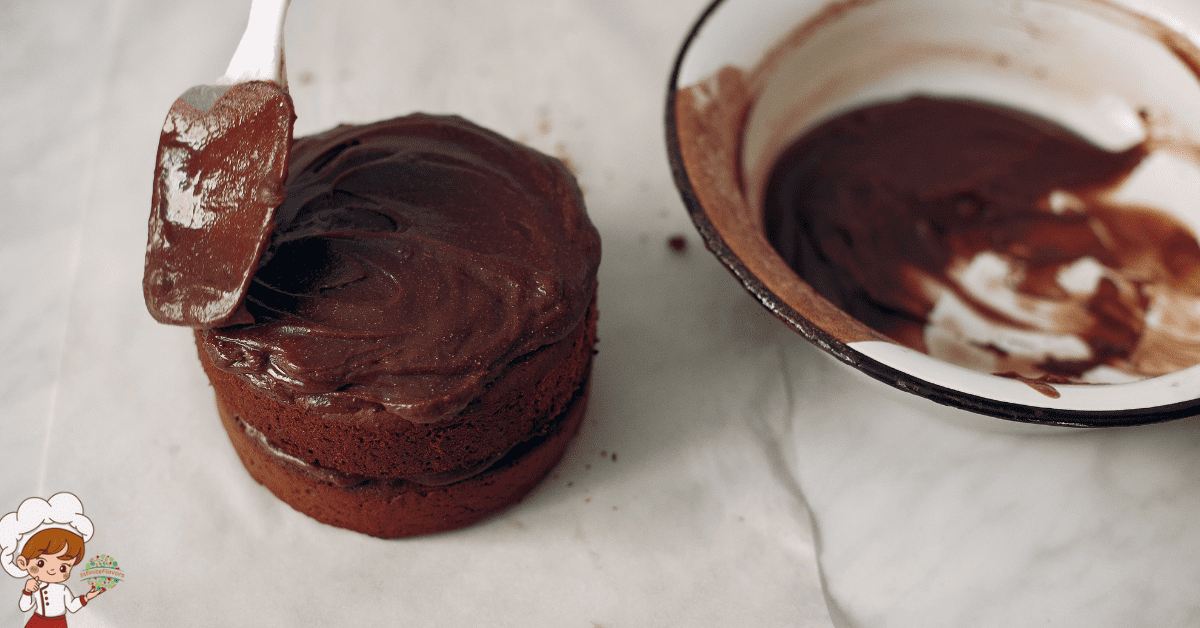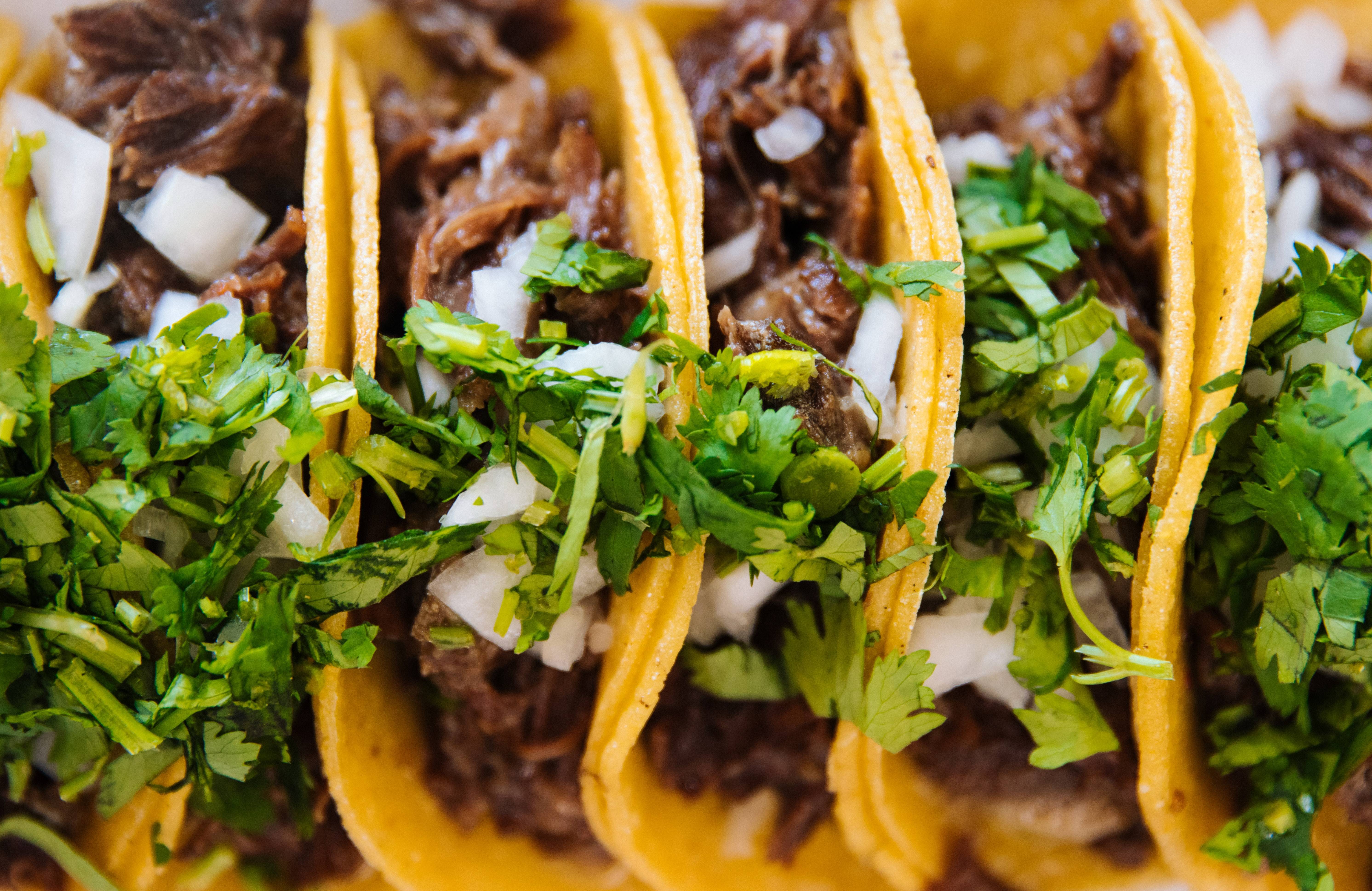The Best Oven Temperature For Roasting Potatoes
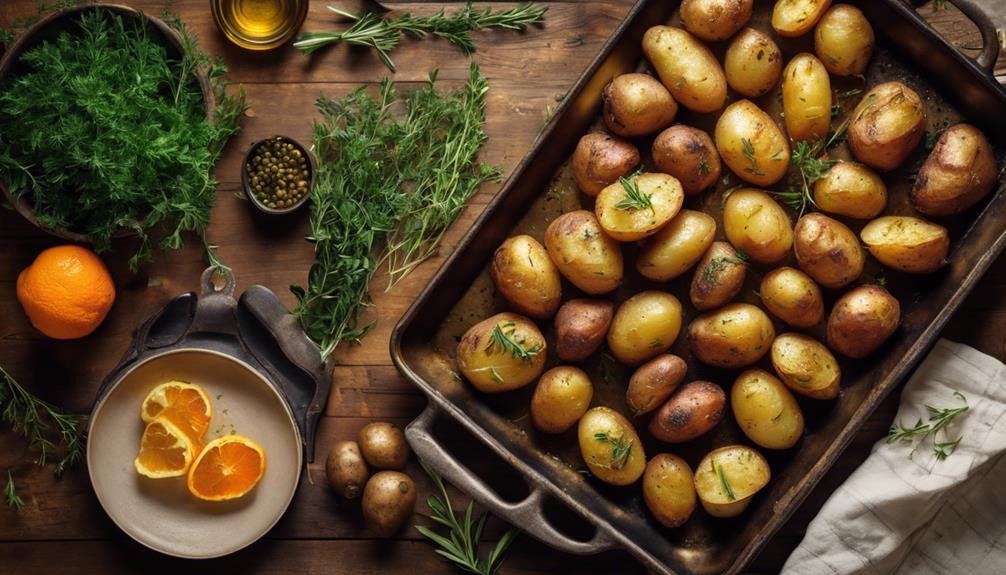
Best Oven Temperature For Roasting Potatoes; For roasting potatoes, set your oven temperature between 400°F and 425°F. This range is essential for achieving that perfect crispy exterior while keeping the inside fluffy. Preheating is important, so give your oven about 15 to 20 minutes to reach the ideal heat. Pay attention to your potato variety as well; starchy ones like Russets work best at these temperatures. Make sure to cut your potatoes into uniform sizes for even cooking. Following these tips will keep you on track to crispy, delicious results. Want to explore more tips and tricks for perfecting your roasted potatoes?
Importance of Oven Temperature
Oven temperature plays an essential role in achieving perfectly roasted potatoes. When you set your oven, it’s vital to guarantee it’s calibrated correctly. Even slight deviations can lead to uneven cooking, resulting in either undercooked or burnt potatoes. Calibration guarantees that your oven heats to the temperature you set, allowing for consistent results each time you roast.
Temperature fluctuations can also impact your cooking process. If your oven doesn’t maintain a steady temperature, you might find that some potatoes are crispy while others are mushy. This inconsistency can be frustrating, especially if you’re aiming for that golden-brown finish. To combat this, regularly check your oven’s performance. You can use an oven thermometer to monitor the actual temperature inside, which helps identify any discrepancies.
When you understand the importance of oven temperature, you set yourself up for success. Properly preheating your oven is key; it guarantees that your potatoes start cooking at the right temperature from the get-go. Skipping this step can lead to uneven roasting. Additionally, be mindful of how often you open the oven door while cooking. Each time you do, you introduce cold air, which can affect the overall temperature and lead to those pesky fluctuations.
Ideal Temperature Range
Roasting potatoes at the right temperature is crucial for achieving that perfect balance of crispy exterior and fluffy interior. The ideal temperature range for roasting potatoes typically falls between 400°F and 425°F (200°C to 220°C). At this temperature, you can utilize various roasting methods effectively, ensuring that your potatoes cook evenly while developing that sought-after golden crust.
When you set your oven within this range, the high heat triggers the Maillard reaction, which is essential for creating that delicious, caramelized flavor. If you roast at temperatures lower than 400°F, you might end up with soggy potatoes instead of the crispy ones you desire. Conversely, temperatures above 425°F can lead to burnt exteriors while leaving the insides undercooked, which defeats the purpose of roasting.
It’s also important to take into account the potato varieties you’re using. Different types of potatoes, such as Yukon Gold or Russets, may have unique characteristics that influence their roasting time and texture. Starchy potatoes like Russets are particularly well-suited for high-temperature roasting, as they create a fluffy interior while achieving that desired crispiness on the outside.
Types of Potatoes for Roasting
When it comes to roasting, the type of potato you choose can make a significant difference in the final result. Different potatoes have unique textures and flavors, so picking the right one is key to achieving that perfect roast.
Yukon Gold potatoes are a popular choice because of their creamy texture and buttery flavor. They roast beautifully, developing a golden hue and a crispy exterior while remaining tender inside. Fingerling potatoes are another great option, known for their elongated shape and earthy taste. They’re perfect for roasting whole, adding a rustic touch to your dish.
Red potatoes, with their thin skin and waxy flesh, hold their shape well during roasting, providing a delightful bite. If you’re after a classic option, Russet varieties are fantastic. They create a fluffy interior and crispy skin, making them ideal for those who love a traditional roast.
Don’t overlook Purple potatoes, either! Their vibrant color adds a visual pop to your plate, and they have a slightly nutty flavor that pairs well with various seasonings. Finally, Sweet potatoes bring a natural sweetness that caramelizes beautifully in the oven. They can make a delicious contrast to savory dishes, offering a unique flair to your meal.
Experimenting with these different types of potatoes can elevate your roasting game, so don’t hesitate to try a mix for added flavor and texture. Enjoy the process, and savor the delicious results!
Preparing Potatoes for Roasting
Preparing your potatoes for roasting is an important step that can enhance their flavor and texture. Start by selecting the right potato varieties. For roasting, you’ll find that waxy potatoes like Yukon Gold or Red Bliss hold their shape better, while starchy options like Russets become fluffy and crispy when roasted. Choose based on the texture you prefer.
Once you’ve picked your potatoes, it’s time to wash them. Use a gentle scrubbing brush under cold running water to remove any dirt or debris. This washing technique guarantees you get rid of any pesticide residues and improves flavor. If you notice any blemishes or eyes on the potatoes, simply cut those off with a small knife.
After washing, pat your potatoes dry with a clean kitchen towel or paper towel. Removing excess moisture is vital, as it helps achieve that crispy exterior you’re aiming for. If you’re working with larger potatoes, consider leaving the skins on for added flavor and nutrients, but if you prefer a smoother texture, peeling is an option.
Cutting Techniques for Even Cooking
To achieve perfectly roasted potatoes, uniform size cuts are essential. You can choose between wedges or cubes, depending on your preference for texture and cooking time. Let’s explore how these cutting techniques impact the final dish.
Uniform Size Cuts
Achieving uniform size cuts is essential for roasting potatoes evenly. When you chop your potatoes into similar sizes, you guarantee they cook at the same rate. This means you won’t end up with some pieces that are perfectly crispy while others are still undercooked. To master cutting techniques, start by selecting potatoes of similar dimensions, which helps with size consistency.
Begin by trimming the ends of each potato to create a flat surface, reducing the chance of slipping while cutting. Next, slice the potatoes into halves or quarters, depending on their size. Aim for pieces that are about 1 to 2 inches thick. If you prefer smaller cuts, try to maintain a consistent size throughout to guarantee even roasting.
Use a sharp knife for clean cuts, as this reduces bruising and helps keep the potatoes intact during cooking. Keep an eye on your technique; practice will improve your skills over time. Remember, even if you don’t get it perfect the first time, your goal is to create uniformity, which will lead to a delicious, evenly roasted potato dish.
Wedge Vs. Cube
When it comes to cutting potatoes for roasting, the choice between wedges and cubes can greatly impact the cooking process. Wedges are thicker and can provide you with a crispy exterior while keeping the inside fluffy. This shape allows for more surface area to caramelize, enhancing flavor. Plus, their larger size means they’ll take a bit longer to cook, which can be beneficial if you’re roasting other veggies that require similar cooking times.
On the other hand, cubes offer their own set of benefits. They cook more quickly and evenly, making them ideal if you’re short on time. The uniformity of cubes guarantees that every piece gets that golden-brown finish, and they’re perfect for soaking up flavors from herbs and spices.
Ultimately, the choice between wedges and cubes depends on your preference and cooking style. If you love that crispy texture, go for wedges. If you want quicker, more uniform cooking, cubes are the way to go. Whichever you choose, just remember to keep your cuts consistent for the best results!
Seasoning Your Potatoes
Seasoning your potatoes can elevate their flavor from simple to spectacular. With the right combination of spices and herbs, you can create mouthwatering flavor infusions that make your roasted potatoes irresistible. Start by tossing your potatoes with olive oil, which not only helps the seasonings adhere but also enhances their natural taste.
Next, consider using various herb blends to amp up the flavor. Fresh herbs like rosemary, thyme, and parsley work wonderfully, but dried versions can also do the trick if you don’t have fresh on hand. Just remember, dried herbs are more concentrated, so use them sparingly. You can also experiment with spice blends like garlic powder, paprika, or even a dash of cayenne for a little kick.
For a more adventurous approach, try combining different herbs and spices to create your own custom blend. A mix of Italian seasoning, garlic salt, and a hint of lemon zest can bring a delightful twist to your potatoes.
Don’t forget to season generously with salt and pepper to enhance all those flavors. After you’ve coated your potatoes evenly, let them marinate for at least 15 minutes. This allows the flavors to penetrate, resulting in a more delicious outcome.
Ultimately, seasoning your potatoes is all about personal preference. Adjust your herb blends and spices to suit your taste, and you’ll find that each batch can become a new culinary adventure. Enjoy the process, and savor every bite!
Choosing the Right Baking Dish
When roasting potatoes, the baking dish you choose can make a big difference. Consider the material, as options like metal or ceramic can affect cooking times and browning. Also, think about the size and shape of the dish to guarantee even cooking and enough space for your potatoes to crisp up nicely.
Material Matters
Choosing the right baking dish can greatly impact the outcome of your roasted potatoes. The material of your dish affects heat distribution and how your potatoes cook. For instance, a metal pan can provide a crispier exterior while ensuring even cooking for various potato varieties, like Yukon Gold or red potatoes. This is vital when you’re using different roasting techniques.
If you prefer a softer texture, opt for a ceramic or glass dish. These materials retain heat well, allowing your potatoes to cook gently and evenly. However, be mindful that they may not achieve the same level of crispiness as metal.
Don’t overlook the importance of non-stick coatings, either. They can help prevent your potatoes from sticking, making for easier cleanup and better presentation.
When you choose a baking dish, reflect on what texture you want to achieve with your potatoes. Whether you’re aiming for crispy edges or a tender bite, the material you select can make all the difference. So, before you toss those potatoes in the oven, take a moment to think about your baking dish choice—it’ll pay off in flavor and texture.
Size and Shape
The size and shape of your baking dish can greatly influence how your roasted potatoes turn out. When you choose the right dish, you set the stage for effective roasting techniques that bring out the best in various potato varieties. A larger, shallow dish allows for more even heat distribution, helping your potatoes crisp up nicely. On the other hand, if you use a smaller, deeper dish, your potatoes may steam rather than roast, leading to a less desirable texture.
For best results, consider the type of potatoes you’re using. For example, waxy varieties like red or fingerling potatoes benefit from a wider dish that promotes browning and caramelization. If you’re roasting starchy potatoes, such as Russets, a deeper dish may be suitable to hold any excess moisture.
Additionally, make sure that your potatoes are spaced out evenly. Crowding them can lead to uneven cooking and soggy results. Ultimately, the right baking dish can enhance your roasting techniques, making your potatoes crispy on the outside and fluffy on the inside. So, pick wisely and enjoy perfectly roasted potatoes!
Preheating Your Oven
To achieve perfectly roasted potatoes, preheating your oven is vital. It sets the stage for even cooking and helps your potatoes get that golden, crispy exterior you crave. Start by checking your oven settings. Most recipes recommend a temperature of around 425°F to 450°F, so adjust your dial accordingly.
Once you’ve set the temperature, it’s time to focus on the preheat duration. Generally, you should allow your oven to preheat for about 15 to 20 minutes. This timeframe guarantees that the heat is evenly distributed throughout the oven, which is essential for roasting. If you skip this step, your potatoes might end up unevenly cooked—some parts could be underdone while others might burn.
While waiting for the oven to reach the desired temperature, take this opportunity to prepare your potatoes. Cut them into uniform pieces, toss them in oil, and season them to your liking. When the oven beeps, signaling it’s ready, you can confidently place your seasoned potatoes inside.
Roasting Times and Temperatures
When roasting potatoes, the right temperature and cooking time are essential for achieving that perfect golden-brown exterior. You’ll find that the size and cut of your potatoes can greatly impact how long they need to cook. Let’s explore the ideal roasting temperature and a general overview of cooking times to help you get it just right.
Ideal Roasting Temperature
Roasting potatoes at the right temperature is essential for achieving that perfect golden-brown exterior and fluffy interior. For most potato varieties, preheating your oven to 425°F (220°C) is ideal. This temperature allows the potatoes to crisp up nicely while guaranteeing the insides cook through. Depending on the roasting techniques you use, you might want to adjust slightly. For instance, if you’re using smaller potatoes or wedges, a hotter oven can help them cook faster and develop that crispy texture you crave.
Don’t forget to choose the right potato variety for roasting. Waxy potatoes, like red or fingerling, hold their shape well but may not get as fluffy. On the other hand, starchy potatoes, such as Russets, yield a lighter, airier texture when roasted. You can even mix different varieties for a more dynamic dish. Just remember to cut them into uniform sizes to guarantee even cooking.
Cooking Times Overview
Achieving perfectly roasted potatoes requires a solid understanding of cooking times and temperatures. The cooking methods you choose will notably affect your potatoes’ final texture and flavor. Generally, you should roast potatoes at a temperature of 400°F to 450°F, depending on the variety. For instance, waxy potato varieties like red or fingerling potatoes may need about 30 to 40 minutes, while starchy options like Russets can take around 45 to 55 minutes.
Keep in mind that cooking times can vary based on the method you use. If you’re using convection, your potatoes may cook faster due to the increased air circulation. Always check for doneness by piercing them with a fork; they should be tender inside with a crispy exterior.
Another factor to take into account is the size of the potato pieces. However, since we’re focusing on cooking times, remember that uniformity in size helps guarantee even cooking. So, when you choose your potato varieties and prepare them, keep these times in mind to achieve that golden, crispy perfection you’re aiming for. Happy roasting!
Size and Cut Impact
The size and cut of your potatoes play a significant role in how they roast, impacting both cooking times and the final texture. Larger chunks take longer to cook than smaller ones, so if you want crispy edges and a fluffy interior, consider your cut size carefully. For instance, quartered potatoes will roast faster than whole ones, while diced potatoes will cook even quicker.
When you choose your cooking method, remember that the oven temperature also affects how different cut sizes perform. If you’re roasting larger pieces, aim for a higher temperature, around 425°F to 450°F, to guarantee a crispy exterior. Conversely, smaller cuts can thrive at slightly lower temperatures, around 400°F, allowing them to cook evenly without burning.
Ultimately, experimenting with different cut sizes can help you discover your preferred texture and flavor. If you like your potatoes crispy on the outside and tender on the inside, adjust your cut size and cooking method accordingly. Monitor your potatoes as they roast and adjust the cooking time based on their size, guaranteeing a delicious result every time.
Checking for Doneness
When it comes to checking for doneness in roasted potatoes, you’ll want to rely on both time and texture. Start by keeping an eye on the clock; typically, potatoes will take around 30 to 45 minutes at a temperature of 425°F, depending on their size and cut. However, don’t just trust the timer—it’s crucial to perform a texture evaluation to ascertain your potatoes are perfectly cooked.
To do this, grab a fork and gently pierce a potato. If it slides in easily without much resistance, they’re likely done. You can also try taste testing a piece. This not only confirms they’re tender but also lets you assess the flavor and seasoning. Remember, you want the insides to be fluffy and soft, while avoiding a mushy texture that signals overcooking.
If you’re unsure, it’s better to err on the side of caution. Give them a few extra minutes, checking back frequently to avoid overcooking. If you find they’re cooked through but don’t have the desired flavor, consider adjusting your seasoning for the next batch.
Ultimately, checking for doneness is a combination of timing and your own senses. With practice, you’ll develop an instinct for when your roasted potatoes are at their best, striking that perfect balance between fully cooked and incredibly tasty. Enjoy the process, and your taste buds will thank you!
Achieving a Crispy Exterior
To get that irresistible crispy exterior on your roasted potatoes, start by making sure they’ve got enough surface area. Cut your potatoes into smaller, even-sized pieces, which allows them to roast more efficiently and promotes a greater crispiness. Aim for a uniform thickness, as this helps them cook evenly, giving you that perfect texture contrast between the crunchy outside and soft inside.
Next, don’t skimp on the oil. A generous coating helps the potatoes brown beautifully. Toss them in a high-smoke point oil, like vegetable or canola oil, which can withstand the high temperatures needed for roasting. This is one of the essential crispy techniques that will elevate your potatoes from good to great.
Preheat your oven to a high temperature, around 425°F to 450°F, as this will facilitate the Maillard reaction—the process that gives roasted foods their delicious golden crust. Spread the potatoes in a single layer on a baking sheet, making sure they aren’t overcrowded. This makes certain hot air circulates around each piece, promoting an even crisp.
Additionally, consider parboiling the potatoes before roasting. This technique softens the insides while allowing the outsides to become rough, giving you even more surface area for that crispy exterior. Finally, give them a good shake halfway through roasting; this will help them brown evenly. Follow these tips, and you’ll achieve potatoes that are not just crispy but also incredibly satisfying!
Common Mistakes to Avoid
Avoiding common mistakes can make all the difference in achieving perfectly roasted potatoes. One of the most significant errors you can make is choosing the wrong potato varieties. Starchy potatoes, like Russets, are great for a fluffy interior, while waxy types, such as Yukon Golds, hold their shape well. Using the right variety for your desired outcome is vital.
Another common mistake is overcrowding the baking sheet. When you pile your potatoes together, they steam rather than roast. This prevents that lovely crispy exterior you’re aiming for. Make sure to give each piece enough space to cook evenly, allowing hot air to circulate around them.
You should also pay attention to your roasting techniques. Preheating your oven is essential; if it’s not hot enough, your potatoes won’t develop that golden, crispy crust. A temperature of around 425°F (220°C) works well for most varieties. Additionally, don’t forget to toss your potatoes in oil and season them adequately before roasting. A little oil helps promote browning, while seasoning enhances the flavor.
Lastly, avoid the temptation to keep opening the oven door to check on your potatoes. Each time you do, you lose heat, which can affect cooking time and texture. Stick to a timer, and trust the process for beautifully roasted potatoes every time. By sidestepping these mistakes, you’ll be well on your way to mastering the art of roasting.
Customizing Flavors and Textures
For those looking to elevate their roasted potatoes, customizing flavors and textures can truly transform the dish. Start by experimenting with herb blends. Fresh herbs like rosemary, thyme, or parsley can add a burst of freshness, while dried blends like Italian seasoning or herbes de Provence offer a convenient option. Simply toss your potatoes in olive oil and your chosen herbs before roasting for an aromatic experience.
Next, consider spice combinations. A dash of smoked paprika or cumin can introduce a warm, earthy note. For a kick, sprinkle in some cayenne pepper or chili powder. Don’t be afraid to mix and match spices until you find the perfect balance that suits your taste.
Flavor infusions can also elevate your potatoes. Before roasting, you might want to infuse the olive oil with garlic or even citrus zest, allowing those flavors to permeate the potatoes as they cook. This step can take your dish to another level, making it irresistibly delicious.
Lastly, think about texture contrasts. You can achieve a crispy exterior by parboiling the potatoes first, then shaking them in the pot to roughen up the surface. This creates more edges for browning, resulting in that desirable crunch. Pairing crunchy roasted potatoes with a creamy dip, like garlic aioli or sour cream, adds another layer of interest to your meal. With these tips, you’ll create roasted potatoes that are both flavorful and satisfying!
Storing Leftover Roasted Potatoes
When you’ve got leftover roasted potatoes, proper storage is key to keeping them fresh. Use airtight containers to maintain their flavor and texture, and make sure to cool them down before sealing. Plus, knowing the best reheating techniques can help you enjoy them just as much the second time around.
Proper Storage Containers
Storing your leftover roasted potatoes properly can make all the difference in maintaining their flavor and texture. To keep them fresh, you should use glass containers with airtight lids. Glass not only provides an excellent seal against moisture and air but also doesn’t retain odors like plastic can. This helps guarantee your potatoes taste just as good when you decide to enjoy them again.
When choosing glass containers, opt for ones that are appropriately sized for your leftovers. If you have a large batch of roasted potatoes, it’s better to store them in a few smaller containers rather than one big one. This way, you can take out only what you need without exposing the entire batch to air, which can lead to quicker spoilage.
Before sealing the containers, let your potatoes cool to room temperature. Placing hot food directly into storage can create steam, which may lead to sogginess. Once cooled, cover them with the airtight lids and place them in the refrigerator. Stored this way, your roasted potatoes can last for about 3 to 5 days, ready to be enjoyed another time!
Reheating Techniques
To enjoy your leftover roasted potatoes at their best, reheating them properly is key. You have a couple of effective options: microwave reheating and stovetop reheating.
If you’re short on time, microwave reheating is quick and easy. Place your potatoes on a microwave-safe plate, cover them with a damp paper towel to prevent dryness, and heat in short intervals, checking frequently until they’re warmed through. However, be aware that this method might leave your potatoes a bit soggy.
For a tastier option, try stovetop reheating. Heat a non-stick skillet over medium heat and add a splash of oil or butter. Once hot, add your leftover potatoes, spreading them out in a single layer. Cook for about 5-7 minutes, flipping occasionally, until they’re heated through and crispy on the outside. This method enhances the flavor and texture, bringing back that delightful crunch.
Whichever method you choose, make certain you enjoy your potatoes promptly after reheating for the best taste and texture. Now you’re all set to savor those delicious leftovers!
Creative Serving Suggestions
Elevate your roasted potatoes by experimenting with creative serving suggestions that can transform this simple side dish into a star attraction. Start with vibrant garnish options like fresh herbs, crumbled feta, or a sprinkle of chili flakes to add flair. For an interactive touch, offer a selection of dipping sauces such as garlic aioli, zesty chimichurri, or a spicy sriracha mayo.
Think about presentation styles, too. Serve your potatoes in a rustic wooden bowl or on a colorful platter to catch the eye. You can even layer them with seasonal toppings like caramelized onions in the fall or fresh tomatoes and basil in the summer.
When it comes to flavor pairings, consider matching your roasted potatoes with roasted garlic, tangy goat cheese, or a drizzle of balsamic reduction. If you’re hosting a gathering, create festive themes by incorporating holiday spices like rosemary and thyme for a cozy winter vibe or fresh citrus zest for a bright spring touch.
Don’t shy away from gourmet twists; try tossing your potatoes with truffle oil or Parmesan cheese for an elevated experience. And if you’re aiming for health-conscious alternatives, consider using sweet potatoes or cauliflower for a nutritious spin. By embracing these creative serving suggestions, you’ll not only enhance the flavor of your roasted potatoes but also make them a memorable part of your meal.
Frequently Asked Questions: Best Oven Temperature For Roasting Potatoes
Can I Roast Potatoes at a Lower Temperature?
Yes, you can roast potatoes at a lower temperature. Just remember, roasting techniques change. You’ll need to adjust cooking times, allowing more time for them to become tender and achieve a nice golden color.
How Do I Avoid Mushy Roasted Potatoes?
To avoid mushy roasted potatoes, cut them into even pieces, use high heat for a crispy texture, and try seasoning options like garlic, rosemary, or paprika. Don’t overcrowd the pan for best results!
Is It Necessary to Peel Potatoes Before Roasting?
You don’t need to peel potatoes before roasting. The skins hold nutritional value and add texture. Leaving them on enhances flavor, and you can enjoy the potato skin benefits while saving time and effort.
Can I Roast Potatoes With Other Vegetables?
Absolutely, you can roast potatoes with other vegetables! Just consider potato pairings like carrots or bell peppers, adjusting roasting times for even cooking. Toss them together, and enjoy a delicious, colorful medley of flavors!
How Do I Reheat Leftover Roasted Potatoes?
To reheat leftover roasted potatoes, preheat your oven to 400°F. Spread the potatoes on a baking sheet, drizzle with oil, and warm for about 10-15 minutes. Store leftovers in an airtight container for freshness.
Conclusion
Roasting potatoes can be a delicious and satisfying experience when you get the oven temperature just right. Remember, a high temperature gives you that perfect crispy exterior while keeping the inside fluffy. By choosing the right potatoes and preparing them properly, you’ll enhance their flavor and texture. Don’t forget to avoid common mistakes and get creative with your seasonings. Enjoy experimenting with different serving ideas, and you’ll always have a crowd-pleaser at your table!




